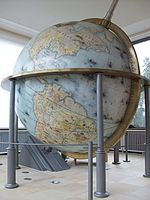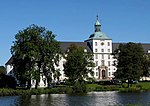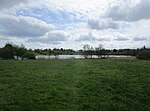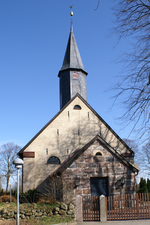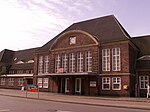A. P. Møller School
The A. P. Møller School (Danish: A. P. Møller Skolen) is a Danish gymnasium in Schleswig (Danish: Slesvig), Southern Schleswig, Germany. Inaugurated in September 2008, it was a gift to the Danish minority of Southern Schleswig from the A. P. Møller Foundation. It is named after the Danish shipping magnate of the same name. The school is situated at a scenic site, overlooking the Schlei Inlet. Built without traditional budget restraints to the design of C. F. Møller Architects, the school is noted for the high quality of its architecture and the materials used and won 2010 RIBA European Award for its design. Furniture include Arne Jacobsen sofas and chairs and artwork includes a light installation of the Solar System by Danish-Icelandic artist Olafur Eliasson. The school is designed using principles from the Danish education system. As a result, the new school building comprises a variety of flexible spaces that can adapt to the self-driven and varied learning experiences that are encouraged.
Excerpt from the Wikipedia article A. P. Møller School (License: CC BY-SA 3.0, Authors).A. P. Møller School
Danziger Straße,
Geographical coordinates (GPS) Address Nearby Places Show on map
Geographical coordinates (GPS)
| Latitude | Longitude |
|---|---|
| N 54.524464 ° | E 9.554564 ° |
Address
Danziger Straße 15
24837 , Lollfuß
Schleswig-Holstein, Germany
Open on Google Maps

